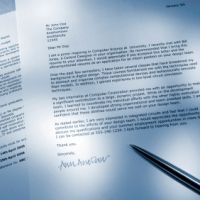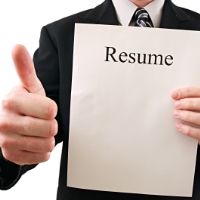So, you're experienced? Before you advertise this in your résumé, be sure you can prove it.
Often, when job seekers try to sell themselves to potential employers, they load their résumés with vague claims that are transparent to hiring managers, according to Scott Bennett, author of "The Elements of Résumé Style" (AMACOM). By contrast, the most successful job seekers avoid these vague phrases on their résumés in favor of accomplishments.
Instead of making empty claims to demonstrate your work ethic, use brief, specific examples to demonstrate your skills. In other words, show, don't tell.
Bennett offers these examples:
Instead of... "Experience working in fast-paced environment"
Try... "Registered 120+ third-shift emergency patients per night"
Instead of... "Excellent written communication skills"
Try... "Wrote jargon-free User Guide for 11,000 users"
Instead of... "Team player with cross-functional awareness"
Try... "Collaborated with clients, A/R and Sales to increase speed of receivables and prevent interruption of service to clients."
Instead of... "Demonstrated success in analyzing client needs"
Try... "Created and implemented comprehensive needs assessment mechanism to help forecast demand for services and staffing."
The worst offenders
It's good to be hard-working and ambitious, right? The hiring manager won't be convinced if you can't provide solid examples to back up your claims. Bennett suggests being extra-careful before putting these nice-sounding but empty words in your résumé.
Aggressive
Ambitious
Competent
Creative
Detail-oriented
Determined
Efficient
Experienced
Flexible
Goal-oriented
Hard-working
Independent
Innovative
Knowledgeable
Logical
Motivated
Meticulous
People person
Professional
Reliable
Resourceful
Self-motivated
Successful
Team player
Well-organized
Source: careerbuilder
Often, when job seekers try to sell themselves to potential employers, they load their résumés with vague claims that are transparent to hiring managers, according to Scott Bennett, author of "The Elements of Résumé Style" (AMACOM). By contrast, the most successful job seekers avoid these vague phrases on their résumés in favor of accomplishments.
Instead of making empty claims to demonstrate your work ethic, use brief, specific examples to demonstrate your skills. In other words, show, don't tell.
Bennett offers these examples:
Instead of... "Experience working in fast-paced environment"
Try... "Registered 120+ third-shift emergency patients per night"
Instead of... "Excellent written communication skills"
Try... "Wrote jargon-free User Guide for 11,000 users"
Instead of... "Team player with cross-functional awareness"
Try... "Collaborated with clients, A/R and Sales to increase speed of receivables and prevent interruption of service to clients."
Instead of... "Demonstrated success in analyzing client needs"
Try... "Created and implemented comprehensive needs assessment mechanism to help forecast demand for services and staffing."
The worst offenders
It's good to be hard-working and ambitious, right? The hiring manager won't be convinced if you can't provide solid examples to back up your claims. Bennett suggests being extra-careful before putting these nice-sounding but empty words in your résumé.
Source: careerbuilder


